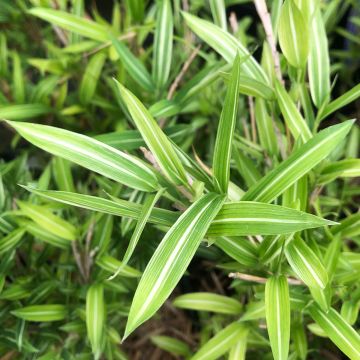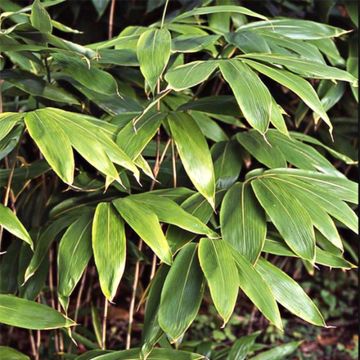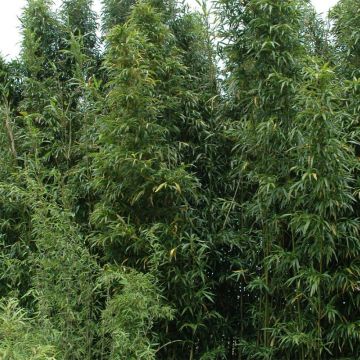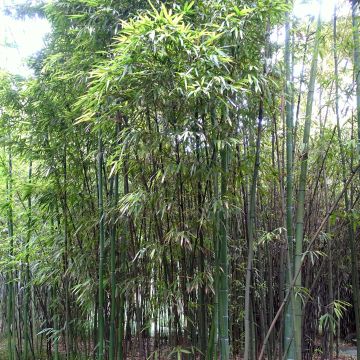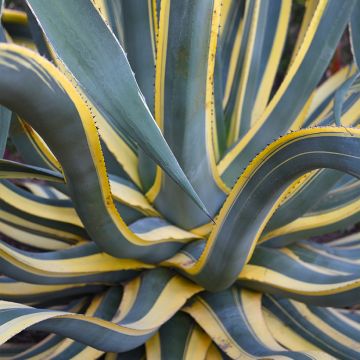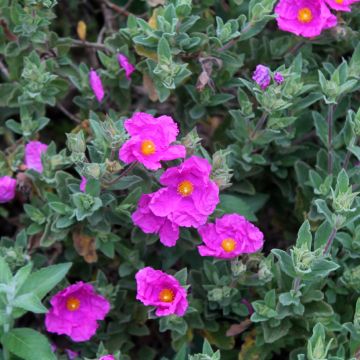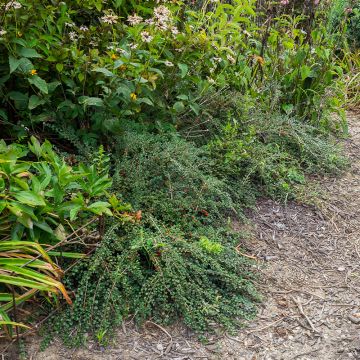

Phyllostachys aureosulcata - Bamboo


Phyllostachys aureosulcata - Bamboo


Phyllostachys aureosulcata - Bamboo


Phyllostachys aureosulcata - Bamboo
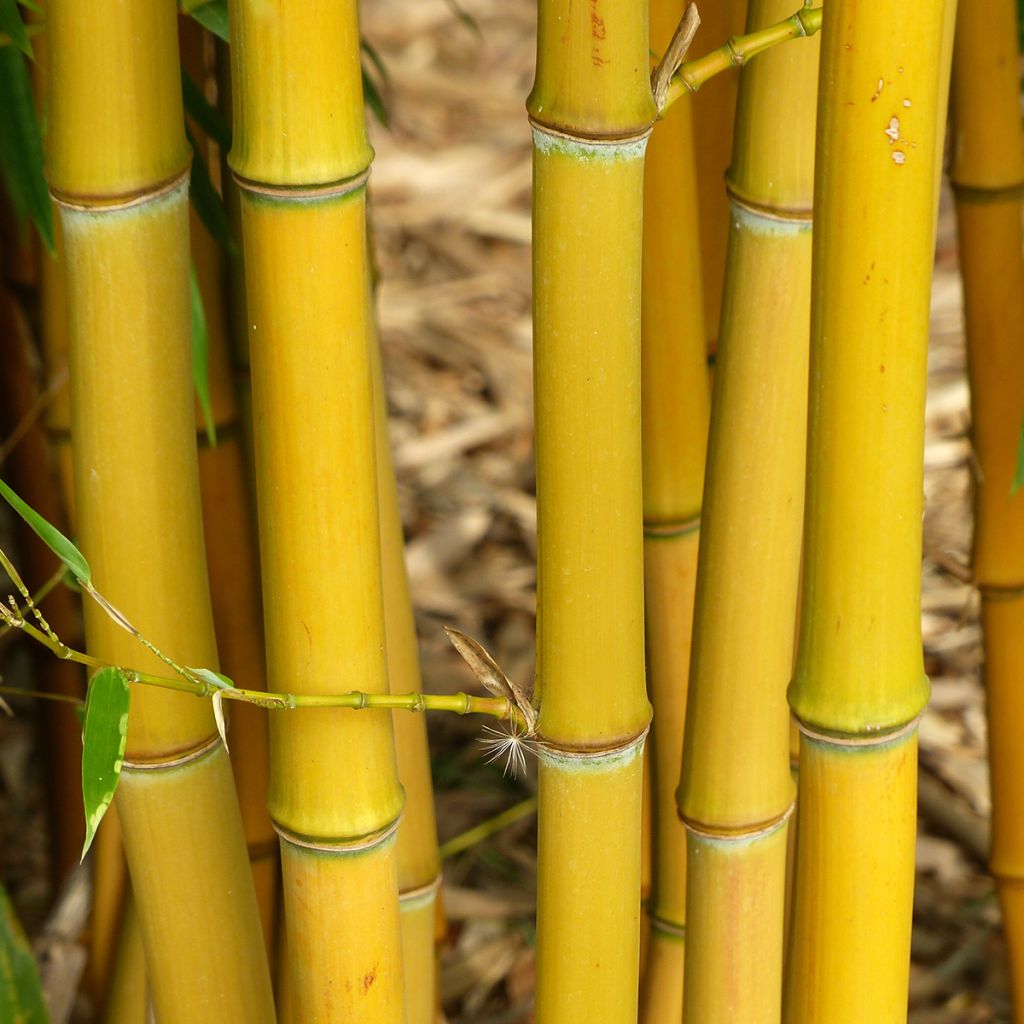

Phyllostachys aureosulcata - Bamboo


Phyllostachys aureosulcata - Bamboo


Phyllostachys aureosulcata - Bamboo
Phyllostachys aureosulcata - Bamboo
Phyllostachys aureosulcata
Golden Groove Bamboo, Yellow Bamboo
Why not try an alternative variety in stock?
View all →This plant carries a 24 months recovery warranty
More information
We guarantee the quality of our plants for a full growing cycle, and will replace at our expense any plant that fails to recover under normal climatic and planting conditions.
Oversize package: home delivery by special carrier from €6.90 per order..
Express home delivery from €8.90.
Does this plant fit my garden?
Set up your Plantfit profile →
Description
Phyllostachys aureosulcata is a botany bamboo quite spectacular and particularly well adapted to northern European climates. Of medium size, easy to cultivate in all exposures, it stands out for the graphic design of its canes. It has a dense foliage, most often evergreen, of a beautiful glossy green. In a hedge, as an isolated clump, in a bed, in a grove or even in a container, this bamboo brings life to any decor, it lacks neither presence nor elegance.
Originally from China, Phyllostachys aureosulcata belongs to the Poaceae family, it is a giant grass with woody stems. Its growth is quite fast, it spreads through trailing rhizomes that should be contained by anti-rhizome barriers. Its habit is erect, vertical and narrow, it develops stems that are initially pubescent when young, becoming rough with age. These are culms, 3 to 4cm (1 to 2in) in diameter, rising up to approximately 7m (23ft) in height in our climates. In spring, the new stems (culms) exposed to full sun take on superb shades of pink, orange, red, purple and even magenta. In early summer, they acquire their brilliant green colour with yellow furrows, which is very striking, and the base of some of them form zig-zags. The foliage of this bamboo is abundant, composed of medium-sized leaves of a fairly dark and glossy green, measuring 9 to 10cm (4in) long and approximately 1.5 to 1.8cm (1in) wide. It is evergreen, but the leaves fall and renew twice a year, in autumn and spring. Perfectly hardy, this bamboo can withstand temperatures as low as -25 °C. However, in case of snowfall, remember to shake off the culms to remove the snow.
Undisputed star of Asian-inspired gardens, bamboo suits many styles, from the most contemporary to the most exotic, including natural gardens or water gardens. Planted en masse, it allows for the quick creation of small exotic forests, its graphic design brings verticality to the decor. Its rapid growth makes it an excellent candidate to conceal an unsightly view, especially if it is planted in fertile and fresh soil. Its presence is such that you can plant it as an isolated clump. Furthermore, in a bed, its unique style can sometimes be difficult to match. For example, combine it with tall grasses or certain palm trees. Bamboos combine very well with each other, choose varieties with differently coloured culms. They are always perfect near water features which they appreciate for their freshness. The cultivation of Phyllostachys aureosulcata is also possible in containers, so you can use it on a terrace as a plant screen to create intimate spaces. A long pathway bordered on both sides by bamboos will simply become a royal avenue. The young shoots of this bamboo are edible and highly prized by gourmets. However, it is necessary to boil them for a while to tenderize them before eating.
Report an error about the product description
Phyllostachys aureosulcata - Bamboo in pictures


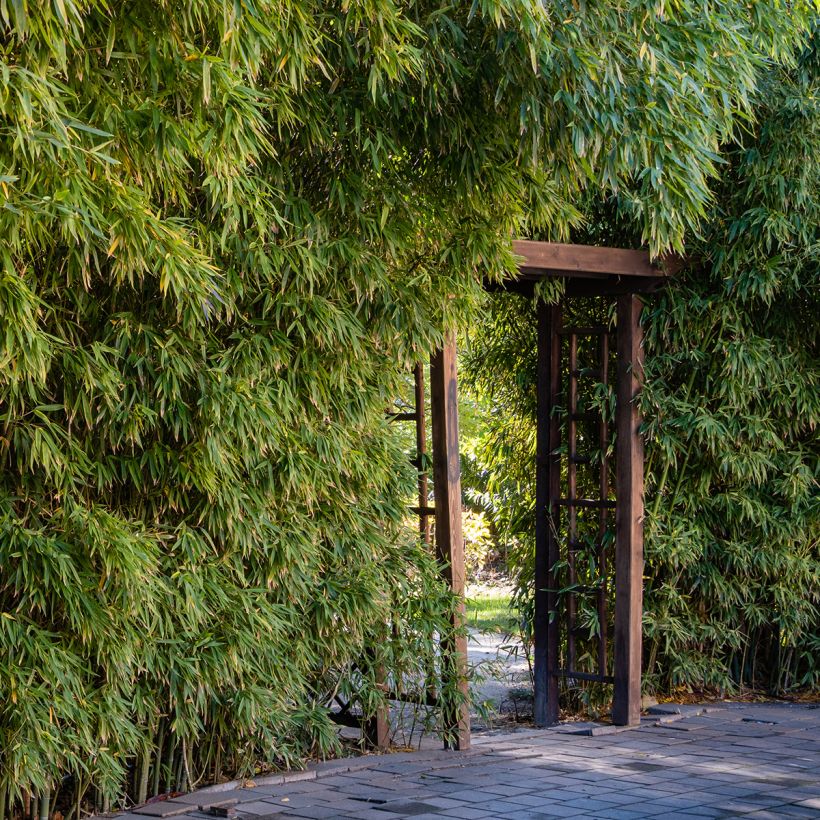

Plant habit
Foliage
Botanical data
Phyllostachys
aureosulcata
Poaceae
Golden Groove Bamboo, Yellow Bamboo
China
Other Spreading Bamboo
Planting and care
Cultivated in containers, bamboo can be planted at any time of the year, except during frost. Nevertheless, the best planting period is late summer and autumn, when the soil is warm and rainfall is more frequent. The planting distance depends on the intended use of your bamboo: for a mass planting, allow a gap of 1.8 to 2.2 metres (6 to 7 feet) between each young plant. For a hedge, this distance is reduced to 1 to 1.4 metres (3 to 5 feet).
In general, bamboo prefers rich, well-drained soil that remains moist, either acidic or neutral. They can tolerate slightly calcareous soil. Phyllostachys aureosulcata can be planted in full sun, shade, or partial shade. While it is very cold resistant (down to -25°C (1°F)), make sure to protect it from cold and dry winds.
During planting, be sure to loosen the soil and moisten the root ball by soaking it. You can add well-decomposed compost, which you will rake on the surface. Watering should be regular for at least the first year if planted in the ground, and constant if your bamboo is grown in a pot. The establishment period can sometimes seem a bit long, but don't panic!
For bamboo with spreading rhizomes, the installation of a rhizome barrier (thick and resistant polypropylene film) is essential, as these varieties do not care about property boundaries and can quickly colonize large areas. The rhizome barrier should be vertically buried, leaving a height of 10cm (4in) above ground, which should be inclined at a 15° angle towards the plant.
In terms of maintenance, bamboo is not demanding: remember to weed around the base, at least in the beginning, until its dead leaves form a natural mulch on the ground. An application of nitrogen fertilizer (well-decomposed manure or liquid fertilizer) in spring and autumn can be beneficial.
Planting period
Intended location
Care
This item has not been reviewed yet - be the first to leave a review about it.
Evergreen shrubs
Haven't found what you were looking for?
Hardiness is the lowest winter temperature a plant can endure without suffering serious damage or even dying. However, hardiness is affected by location (a sheltered area, such as a patio), protection (winter cover) and soil type (hardiness is improved by well-drained soil).

Photo Sharing Terms & Conditions
In order to encourage gardeners to interact and share their experiences, Promesse de fleurs offers various media enabling content to be uploaded onto its Site - in particular via the ‘Photo sharing’ module.
The User agrees to refrain from:
- Posting any content that is illegal, prejudicial, insulting, racist, inciteful to hatred, revisionist, contrary to public decency, that infringes on privacy or on the privacy rights of third parties, in particular the publicity rights of persons and goods, intellectual property rights, or the right to privacy.
- Submitting content on behalf of a third party;
- Impersonate the identity of a third party and/or publish any personal information about a third party;
In general, the User undertakes to refrain from any unethical behaviour.
All Content (in particular text, comments, files, images, photos, videos, creative works, etc.), which may be subject to property or intellectual property rights, image or other private rights, shall remain the property of the User, subject to the limited rights granted by the terms of the licence granted by Promesse de fleurs as stated below. Users are at liberty to publish or not to publish such Content on the Site, notably via the ‘Photo Sharing’ facility, and accept that this Content shall be made public and freely accessible, notably on the Internet.
Users further acknowledge, undertake to have ,and guarantee that they hold all necessary rights and permissions to publish such material on the Site, in particular with regard to the legislation in force pertaining to any privacy, property, intellectual property, image, or contractual rights, or rights of any other nature. By publishing such Content on the Site, Users acknowledge accepting full liability as publishers of the Content within the meaning of the law, and grant Promesse de fleurs, free of charge, an inclusive, worldwide licence for the said Content for the entire duration of its publication, including all reproduction, representation, up/downloading, displaying, performing, transmission, and storage rights.
Users also grant permission for their name to be linked to the Content and accept that this link may not always be made available.
By engaging in posting material, Users consent to their Content becoming automatically accessible on the Internet, in particular on other sites and/or blogs and/or web pages of the Promesse de fleurs site, including in particular social pages and the Promesse de fleurs catalogue.
Users may secure the removal of entrusted content free of charge by issuing a simple request via our contact form.
The flowering period indicated on our website applies to countries and regions located in USDA zone 8 (France, the United Kingdom, Ireland, the Netherlands, etc.)
It will vary according to where you live:
- In zones 9 to 10 (Italy, Spain, Greece, etc.), flowering will occur about 2 to 4 weeks earlier.
- In zones 6 to 7 (Germany, Poland, Slovenia, and lower mountainous regions), flowering will be delayed by 2 to 3 weeks.
- In zone 5 (Central Europe, Scandinavia), blooming will be delayed by 3 to 5 weeks.
In temperate climates, pruning of spring-flowering shrubs (forsythia, spireas, etc.) should be done just after flowering.
Pruning of summer-flowering shrubs (Indian Lilac, Perovskia, etc.) can be done in winter or spring.
In cold regions as well as with frost-sensitive plants, avoid pruning too early when severe frosts may still occur.
The planting period indicated on our website applies to countries and regions located in USDA zone 8 (France, United Kingdom, Ireland, Netherlands).
It will vary according to where you live:
- In Mediterranean zones (Marseille, Madrid, Milan, etc.), autumn and winter are the best planting periods.
- In continental zones (Strasbourg, Munich, Vienna, etc.), delay planting by 2 to 3 weeks in spring and bring it forward by 2 to 4 weeks in autumn.
- In mountainous regions (the Alps, Pyrenees, Carpathians, etc.), it is best to plant in late spring (May-June) or late summer (August-September).
The harvesting period indicated on our website applies to countries and regions in USDA zone 8 (France, England, Ireland, the Netherlands).
In colder areas (Scandinavia, Poland, Austria...) fruit and vegetable harvests are likely to be delayed by 3-4 weeks.
In warmer areas (Italy, Spain, Greece, etc.), harvesting will probably take place earlier, depending on weather conditions.
The sowing periods indicated on our website apply to countries and regions within USDA Zone 8 (France, UK, Ireland, Netherlands).
In colder areas (Scandinavia, Poland, Austria...), delay any outdoor sowing by 3-4 weeks, or sow under glass.
In warmer climes (Italy, Spain, Greece, etc.), bring outdoor sowing forward by a few weeks.






































